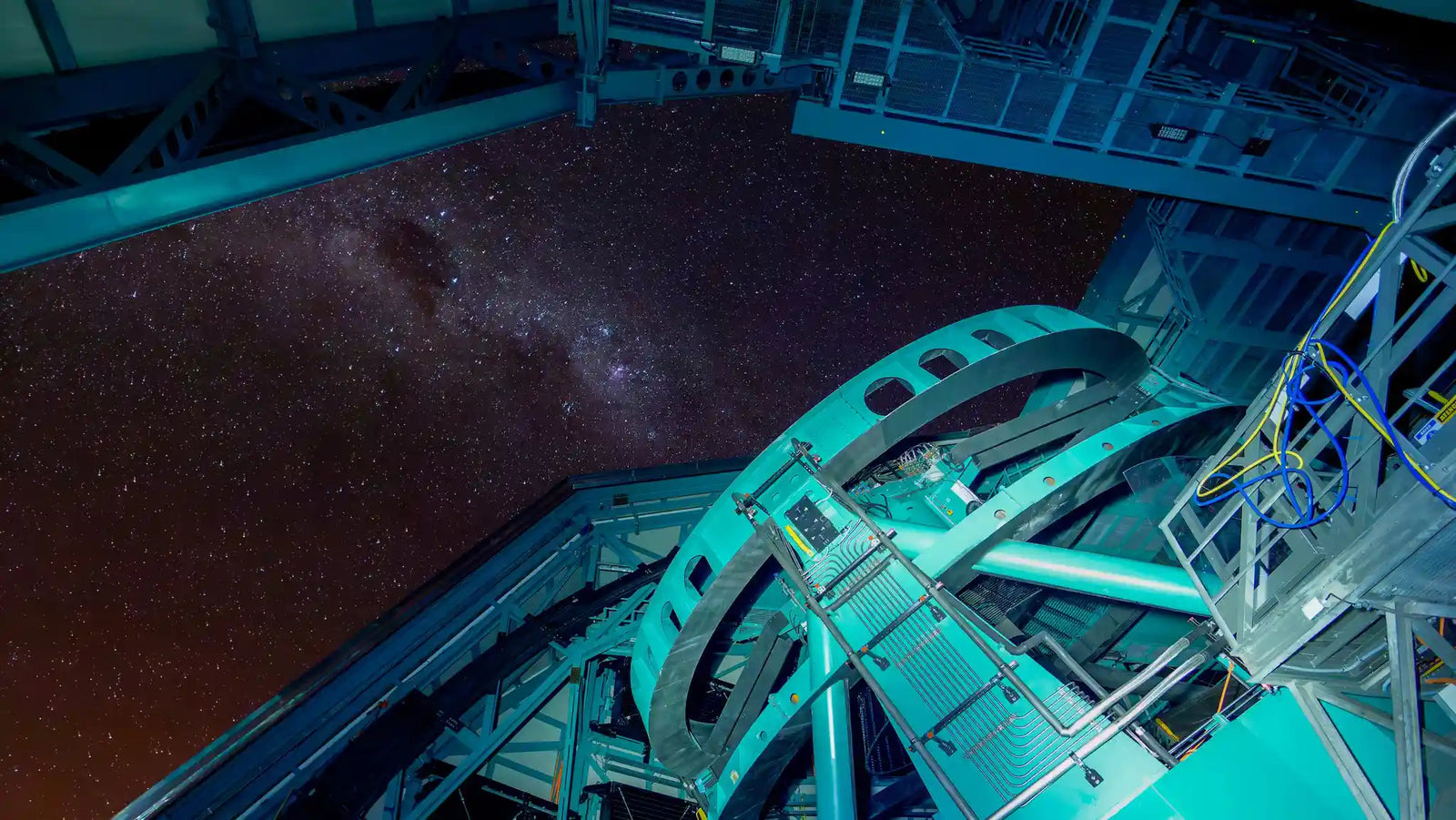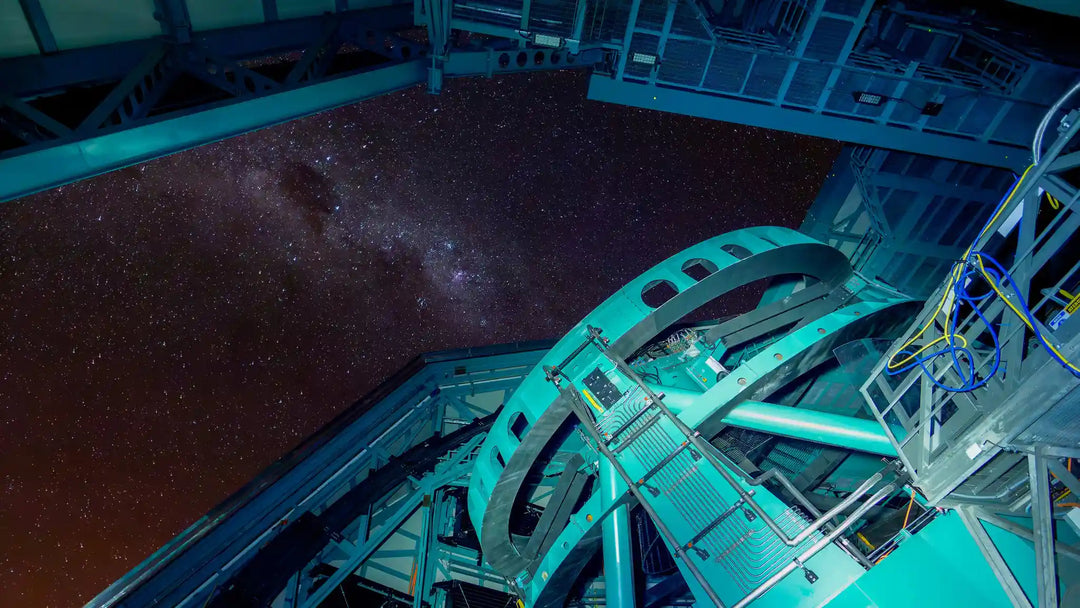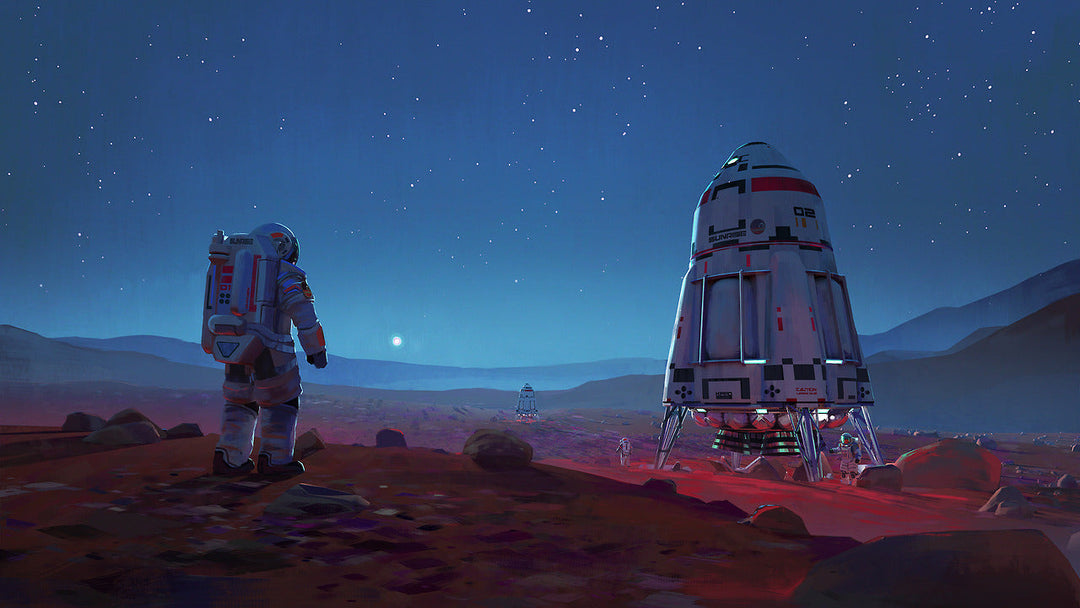Vera C. Rubin Observatory Images: First Look Gallery

The Vera C. Rubin Observatory has officially opened its cosmic treasure chest to the world, releasing spectacular first images that mark the dawn of a revolutionary decade in astronomy. Located atop Cerro Pachón in Chile's Andes Mountains, this groundbreaking observatory houses the world's largest digital camera and promises to transform our understanding of the universe through an unprecedented 10-year survey.
The first images are here, and they're absolutely breathtaking. These initial glimpses showcase the observatory's extraordinary capabilities, featuring millions of galaxies, stunning nebulae, and the discovery of over 2,000 asteroids in just 10 hours of observation. This is just the beginning of what scientists are calling the greatest cosmic movie ever made.
Discover Vera C. Rubin Observatory Images Collection
The Cosmic Treasure Chest: 10 Million Galaxies in a Single Frame
The Cosmic Treasure Chest represents one of the most remarkable achievements in astronomical imaging. This stunning panoramic view captures approximately 10 million galaxies in the southern region of the Virgo Cluster, located about 55 million light-years from Earth. This stunning image, a mosaic of over 1,100 separate exposures, showcases the immense power of Rubin's 3.2-gigapixel camera.
Key Features of the Cosmic Treasure Chest:
Field of View: 15 square degrees - equivalent to about 45 times the area of the full moon
Galaxy Count: Approximately 10 million galaxies visible
Distance Coverage: Ranges from nearby Milky Way stars to galaxies billions of light-years away
Data Size: Would require 400 Ultra HD television screens to display in full resolution
Scientific Significance
This image demonstrates the broad range of science made possible by Rubin data, featuring everything from bright foreground stars in our galaxy to distant red galaxy groups. The Cosmic Treasure Chest contains only 0.05% of the roughly 20 billion galaxies that Rubin will image during its 10-year Legacy Survey of Space and Time.
What You'll See:
- Bright blue and red stars from our Milky Way galaxy
- Spiral galaxies with intricate arm structures
Elliptical galaxies appearing as fuzzy oval shapes - Galaxy clusters and groups across vast cosmic distances
- Evidence of galaxy mergers and interactions
This "Cosmic Treasure Chest" is just a small sample of what the Legacy Survey of Space and Time (LSST) will achieve. Over the next decade, Rubin will repeatedly scan the entire southern sky, creating a time-lapse movie of the universe that will track billions of objects and their changes over time.
The Virgo Cluster's Cosmic Drama
The Cosmic Drama unfolds in Rubin Observatory's spectacular view of the Virgo Cluster, capturing a small section of the observatory's view of this dynamic region of the cosmos. This image reveals both the grand scale and the faint details of the Virgo Cluster, showing bright stars from our own Milky Way shining in the foreground, while a sea of distant reddish galaxies speckle the background.
What Makes This Cosmic Drama Special:
- Dynamic galaxy interactions: The image showcases two prominent spiral galaxies and three merging galaxies, demonstrating cosmic collisions in progress
Foreground and background contrast: Bright Milky Way stars create a dramatic foreground against the backdrop of distant galaxy clusters
Wide-field perspective: This represents just a small section of Rubin's total view, yet contains an incredible diversity of cosmic phenomena
Cosmic Abundance: A Rich Tapestry of Celestial Objects
The Cosmic Abundance showcased in Rubin's first images reveals the incredible diversity of objects that populate our universe. This small section of the Virgo Cluster offers a vivid glimpse of the variety in the cosmos, demonstrating the observatory's ability to capture both nearby and distant celestial phenomena.
Cosmic Abundance Features:
Spiral galaxies with clearly defined arm structures
Merging galaxy systems showing cosmic collisions in progress
Foreground Milky Way stars in various colors and brightnesses
Distant galaxy groups representing different cosmic epochs
Star-forming regions where new stellar nurseries are active
I think people are going to be amazed by the number of objects in these images, just as we were by the Hubble Deep Field ... but on a very different scale, as Rubin's camera is huge. Rubin is going to show us the universe in a totally new way!
Trifid and Lagoon: Star-Forming Masterpieces
The Cotton Candy Nebula - Trifid Nebula (Messier 20)
The Trifid Nebula , nicknamed the "cotton candy nebula" for its colorful swirls, stands as one of Rubin's most spectacular debut images. Located approximately 5,000 light-years away in the constellation Sagittarius, this stellar nursery showcases the observatory's ability to reveal intricate cosmic structures.
This nebula is famous for its three-lobed appearance, created by dark lanes of dust that trisect a glowing emission nebula. The new image showcases the delicate interplay of red, glowing hydrogen gas, and blue reflection nebulae where light from young stars scatters off dust particles.
Trifid Nebula Characteristics:
Pink regions: Emission nebula where ionized gas glows from stellar radiation
Blue areas: Reflection nebula scattering light from nearby stars
Dark lanes: Dust clouds that split the nebula into three sections (hence "Trifid")
Star formation: Active stellar birth region with young, massive stars
Lagoon Nebula (Messier 8) - A Cosmic Companion
Below the Trifid in Rubin's image lies the Lagoon Nebula, another vibrant stellar nursery glowing about 4,000 light-years away. This nebula provides scientists with an excellent laboratory for studying the earliest stages of star formation.
A much larger and brighter nebula, the Lagoon is a turbulent region of intense star formation. Rubin's view captures the swirling clouds of gas and the brilliant young stars that illuminate them from within.
What makes this image so special is not just its beauty, but the science it enables.
By studying the colors and structures within these nebulae, astronomers can learn more about the processes of star and planet formation. The incredible depth of the Rubin image will allow them to see fainter stars and more subtle details than ever before.
Technical Achievement:
Image composition: 678 separate exposures taken over 7.2 hours
Total data: Approximately 2 trillion pixels
Resolution: Nearly 5 gigapixels in the final composite
Unique capability: No other observatory can produce such wide-area images so quickly
Explore the Universe Through Art
Vera C. Rubin Observatory Images: Summary & Key Takeaways
The first images from the Vera C. Rubin Observatory are a landmark achievement in astronomy. They offer a tantalizing preview of the scientific discoveries that lie ahead.
Unprecedented Scale: The observatory's massive camera can capture vast areas of the sky with incredible depth, revealing millions of celestial objects in a single shot.
A Dynamic Universe: Rubin has already proven its ability to detect thousands of new asteroids, highlighting its crucial role in solar system science and planetary defense.
A Data Revolution: The Legacy Survey of Space and Time will generate an enormous dataset that will keep astronomers busy for decades, leading to countless new discoveries.
Stunning Beauty and Science: The images of the Trifid and Lagoon Nebulae showcase the observatory's ability to capture breathtakingly beautiful images that also contain a wealth of scientific information.
FAQ: You Ask, We Answer
What is the Vera C Rubin Observatory and why is it important?
The Vera C. Rubin Observatory is a revolutionary astronomical facility in Chile housing the world's largest digital camera (3,200 megapixels) and an 8.4-meter telescope. It's important because it will conduct the most comprehensive sky survey in history, imaging 20 billion galaxies over 10 years to study dark matter, dark energy, and cosmic evolution
How large are the Vera C Rubin Observatory first images compared to regular photos?
The Rubin Observatory's 3,200-megapixel images are massive compared to regular photos. A single image would require 400 Ultra HD television screens to display in full resolution, and contains enough detail that modern smartphones with 50-megapixel cameras would need 64 images to match one Rubin photo
What is so special about the Vera C. Rubin Observatory First Look?
The "First Look" is significant because it marks the successful commissioning of the world's most powerful survey telescope. The images demonstrate the observatory's unprecedented ability to capture wide and deep views of the universe, heralding a new era of astronomical discovery.
What will the Vera C. Rubin Observatory images show us?
Over its ten-year mission, the observatory will capture images of the entire southern sky hundreds of times. These images will reveal the faint and distant universe, track billions of moving and changing objects, and help us understand fundamental questions about dark matter, dark energy, the formation of our galaxy, and the nature of our solar system.
How is the Vera C. Rubin Observatory different from the James Webb Space Telescope (JWST)?
While both are powerful telescopes, they have different strengths. The JWST is a space-based observatory that excels at incredibly detailed, deep views of small areas of the sky, primarily in infrared light. The Rubin Observatory is a ground-based telescope with a much wider field of view, designed to survey the entire sky quickly in visible light. They are complementary instruments that will work together to advance our understanding of the cosmos.
What is the Cosmic Treasure Chest image from Vera Rubin Observatory?
The Cosmic Treasure Chest is a spectacular panoramic image showing approximately 10 million galaxies. It demonstrates the incredible diversity of cosmic objects, from nearby Milky Way stars to distant galaxy groups, representing just 0.05% of the 20 billion galaxies Rubin will capture
How many asteroids did the Vera C Rubin Observatory discover in its first observations?
In just over 10 hours of test observations, the Vera C. Rubin Observatory discovered more than 2,000 previously unknown asteroids, including 7 near-Earth asteroids that pose no threat to Earth. This discovery rate suggests the observatory will find millions of new solar system objects during its 10-year survey
What makes the Trifid and Lagoon nebula images special?
The Trifid and Lagoon nebula images showcase Rubin's ability to capture intricate cosmic structures in unprecedented detail. The composite image combines 678 exposures taken over 7 hours, revealing star-forming regions thousands of light-years away with vivid colors showing emission nebulae, reflection nebulae, and dark dust lanes
Where is the Vera C Rubin Observatory located and why was this site chosen?
The Vera C. Rubin Observatory is located on Cerro Pachón in Chile's Andes Mountains at an altitude of 2,682 meters. This site was chosen for its exceptional dark skies, dry atmospheric conditions, and minimal light pollution, providing ideal conditions for deep-space astronomical observations
What is the Legacy Survey of Space and Time (LSST) mission?
The Legacy Survey of Space and Time (LSST) is Rubin Observatory's 10-year mission to image the entire southern hemisphere sky every 3-4 nights. It will generate 60 petabytes of data, create the most detailed map of 20 billion galaxies, and enable breakthrough discoveries in dark matter, dark energy, solar system objects, and transient cosmic phenomena
How much data will the Vera C Rubin Observatory generate daily?
The Vera C. Rubin Observatory will generate approximately 20 terabytes of raw data every night during its 10-year survey. By the end of the mission, the total dataset will reach 60 petabytes - more data than everything ever written in any language in human history.













![Vera C. Rubin Observatory: Revolutionizing Astronomy Through the World's Most Advanced Telescope [All You Need To Know]](http://astrography.com/cdn/shop/articles/vera-c.-rubin-observatory_main.webp?v=1751627507&width=1080)

Leave a comment